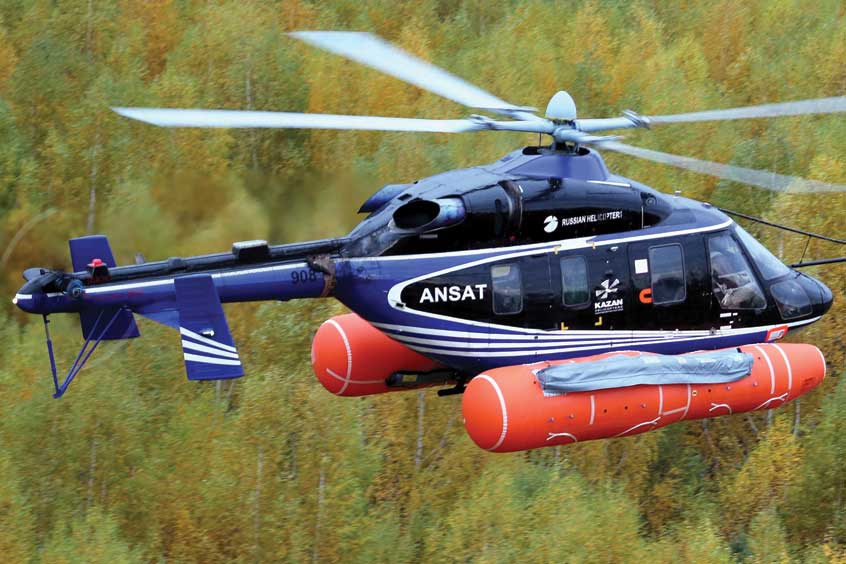Why visit ACE ’25?

Russia's Federal Air Transport Agency (Rosaviatsiya) has certified the installation of an emergency flotation system on the Ansat helicopter. It is designed for emergency water landing and is used to save lives of the crew and passengers. Rosaviatsiya also issued Kazan Helicopters of Russian Helicopters Holding Company, a part of Rostec State Corporation, with the approval for the main change: the reduction in airworthiness limitations of several main parts of Ansat.
The emergency flotation system was tested at the flight and test complex of Kazan Helicopters. The programme included assessment of the helicopter performance with packed and filled ballonets, which are made of an elastic material ensuring flotation of the rotorcraft. The time necessary for filling the ballonets during the flight was also measured. During the tests on the ground, the activation of life rafts and the possibility of evacuating passengers and the crew through emergency exits were assessed.
“Kazan Helicopters received an opinion on the flotation and resilience of the Ansat helicopter with the sea state code 4 (moderate waves) according to the World Meteorological Organization, after simulation tests by the Central Aerohydrodynamic Institute named after N.E. Zhukovsky in a basin and in the open sea. I would like to emphasise that due to this system, the Ansat helicopter provides for safe evacuation of passengers and crew to life rafts in case of ditching,” says MD of Kazan Helicopters Yuri Pustovgarov.
Ansat helicopters equipped with the emergency flotation system will be capable of flights at a considerable distance from the coast, as well as of participation in search and rescue operations. The installation of the emergency flotation system will be optional, at the customer's request.
Additionally, the Ansat has received certification of the reduction in airworthiness limitations of its main parts, such as the main rotor hub, the anti torque rotor and the empennage. This will allow for the reduction in the cost of replacing the parts and considerably reduce the cost of helicopter maintenance and flying hours in general.